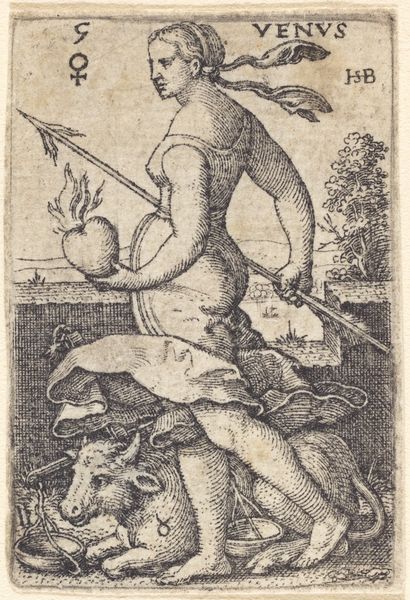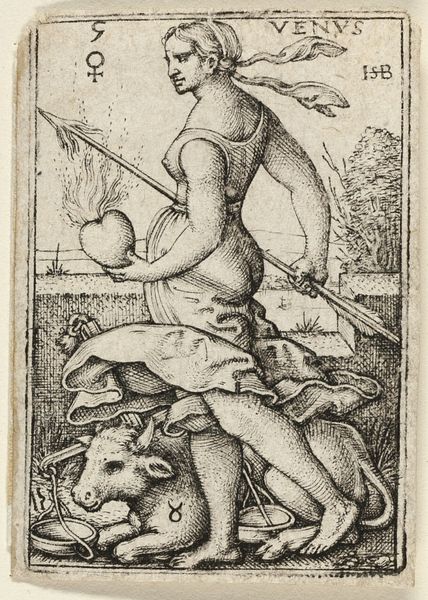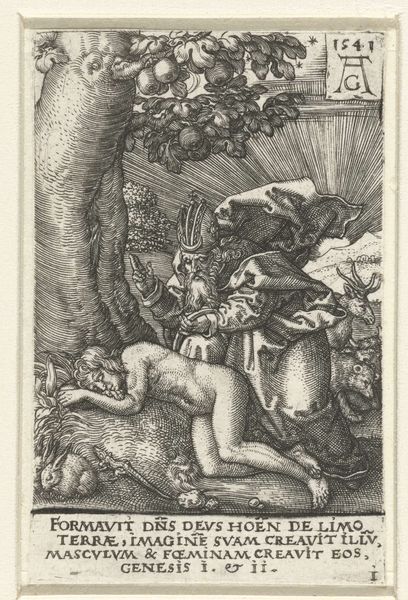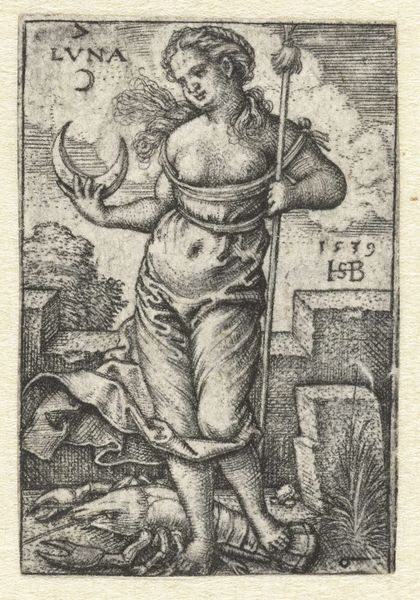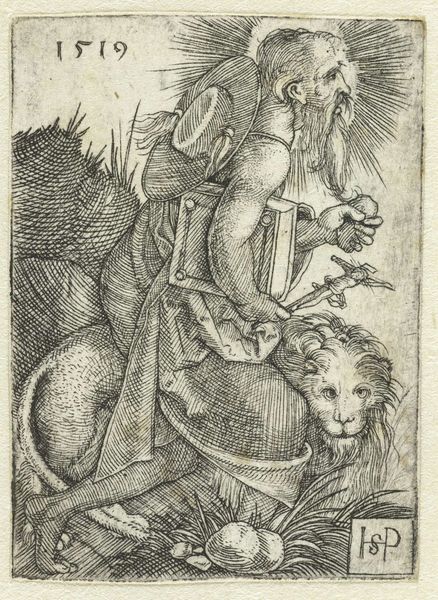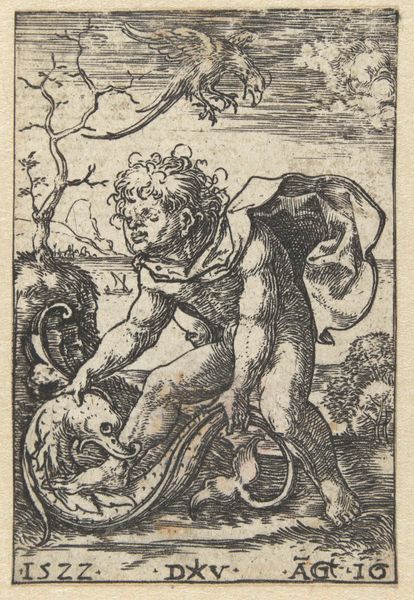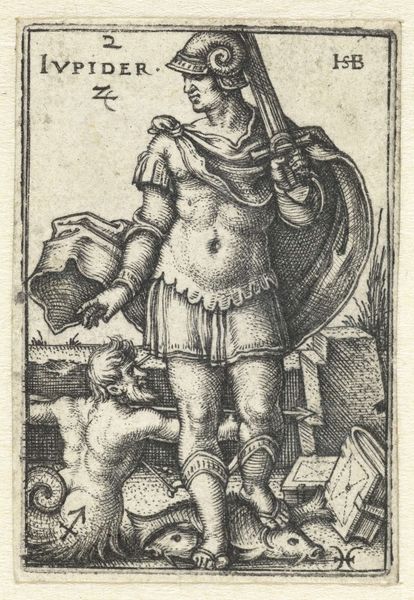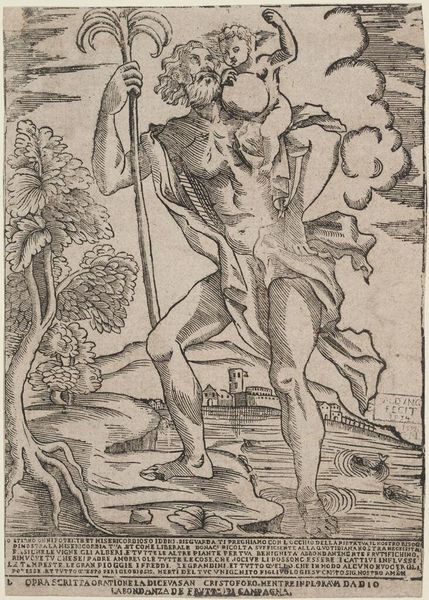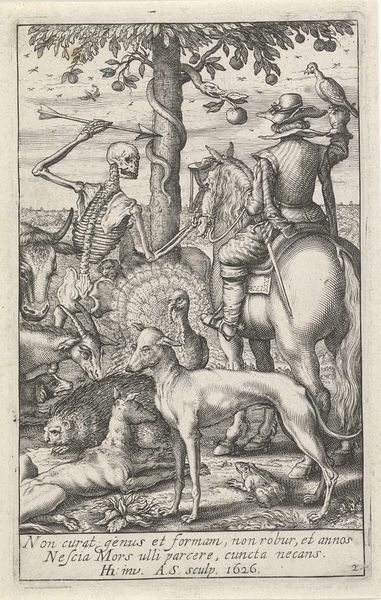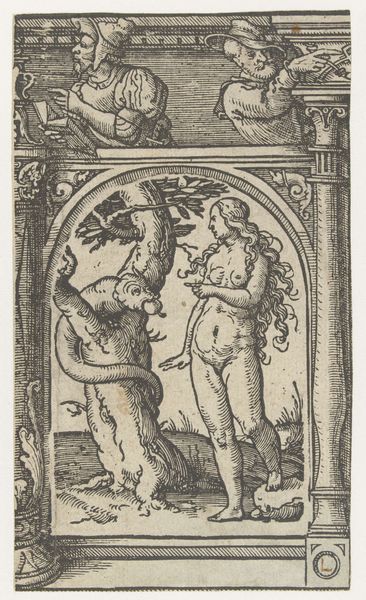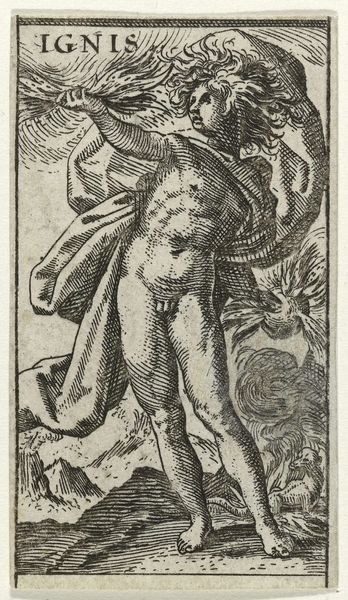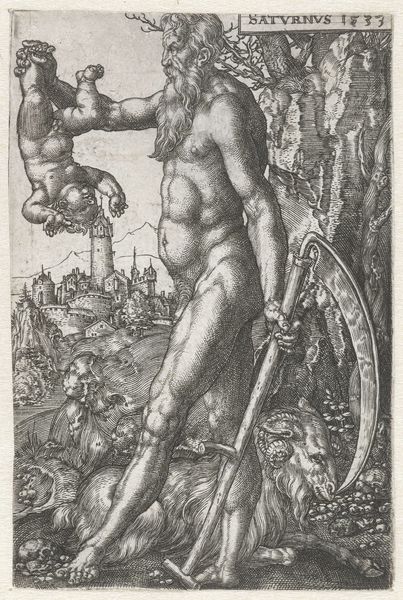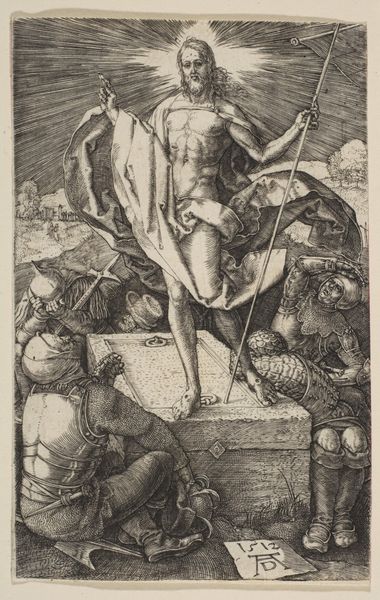
print, engraving
#
allegory
#
pen drawing
# print
#
figuration
#
11_renaissance
#
line
#
history-painting
#
northern-renaissance
#
engraving
Dimensions: height 43 mm, width 29 mm
Copyright: Rijks Museum: Open Domain
Curator: Let's talk about Sebald Beham's "Venus with the constellations Taurus and Libra," made in 1539. The print's detailed linework immediately draws me in. What’s your initial impression? Editor: Well, it’s quite small, an engraving, I think? Venus seems to be almost dominating the animals, which feels strange given her usual association with gentleness. What do you see in this piece? Curator: I find myself thinking about the labour involved in creating such an intricate image, each line carefully etched into the printing plate. Consider the social context – printmaking was a relatively new and increasingly democratized mode of disseminating images and ideas. Editor: That's a good point, how this image was produced seems important! Can you tell me more about how these images were used? Curator: Prints like these weren’t just aesthetic objects, they were commodities, reproduced and sold, circulating visual ideas widely. Notice how Beham, while referencing classical allegory, is also engaging with a developing commercial market for art. Are you surprised about the combination of classical and contemporary, perhaps more worldly references? Editor: A little! The commercial aspect is interesting, thinking of it as less "high art" and more a product. Curator: Exactly. The material itself – the paper, the ink, the printing press – and the act of making the print all contribute to its meaning. It invites a different kind of engagement than, say, a unique painting commissioned by a wealthy patron. We consider both the "what" but also the "how" and "why." Editor: That really shifts how I see it. It’s not just an image of Venus; it's also about the economics and accessibility of art in the 16th century. Curator: Precisely! Seeing art through a materialist lens reveals how deeply enmeshed art is with production and consumption, broadening the scope of art history to include more diverse forms of labour and materiality.
Comments
No comments
Be the first to comment and join the conversation on the ultimate creative platform.
